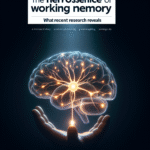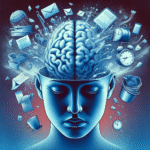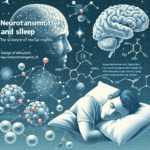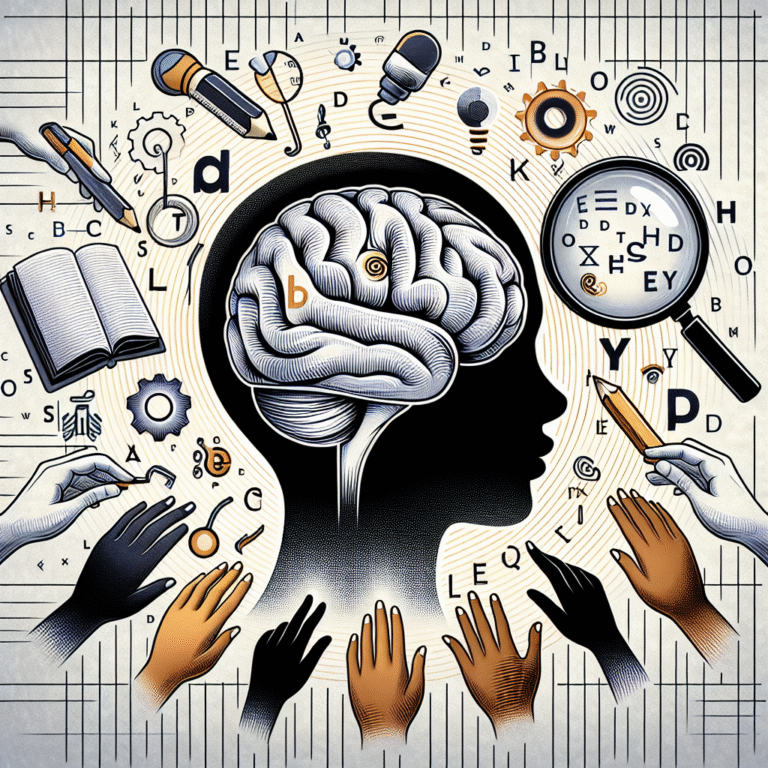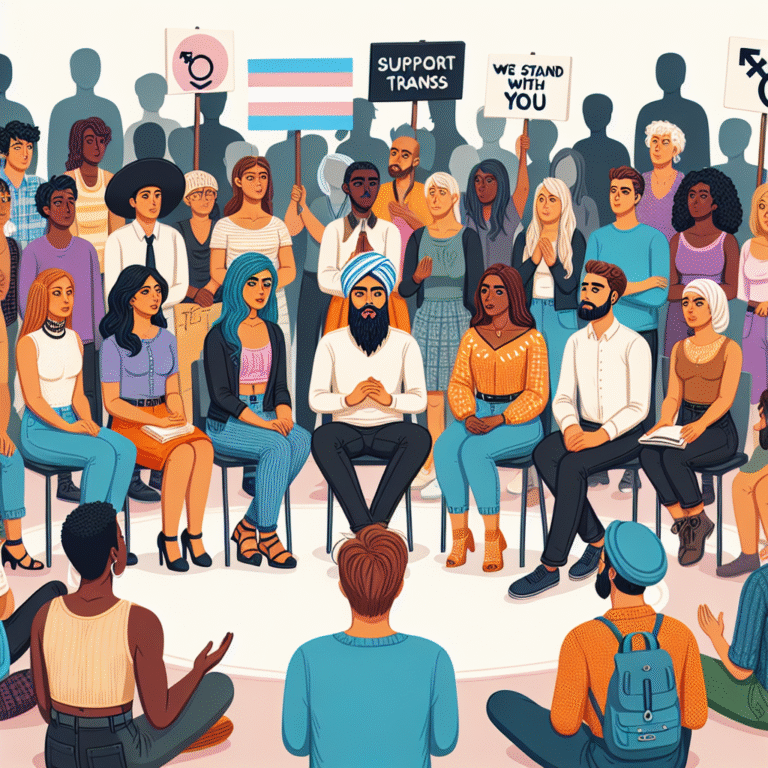Breaking Barriers: Essential Strategies for Learning Foreign Languages with Learning Disabilities
Introduction
Imagine the exhilaration of traveling to a foreign country, immersing yourself in a new culture, and effortlessly communicating with locals. Now, consider how that dream might feel like a distant reality for individuals with learning disabilities. The journey to learning a foreign language can be fraught with challenges, yet it is far from impossible. This article, Breaking Barriers: Essential Strategies for Learning Foreign Languages with Learning Disabilities, aims to shed light on practical and effective approaches that empower learners to not only acquire a new language but to embrace it fully.
In a world that increasingly values multilingualism, understanding how to support individuals with learning disabilities in language acquisition is crucial. This article will explore comprehensive strategies, case studies, and insights that illustrate the path to breaking barriers, transforming the foreign language learning experience into a dynamic and rewarding endeavor.
Understanding Learning Disabilities
Before diving into strategies for breaking barriers in language acquisition, it is vital to understand what learning disabilities entail. Often, these conditions affect how individuals process, comprehend, and retain information. Examples include dyslexia, dyscalculia, and auditory processing disorder, among others. These disabilities can significantly impact language learning, particularly when it involves intricate grammar rules, vocabulary retention, and pronunciation.
Case Study: Jason’s Journey
Take the case of Jason, a high school student diagnosed with dyslexia. Despite his struggles with reading and writing in English, he expressed a desire to learn Spanish. With traditional methods falling short, Jason’s teachers implemented multisensory learning techniques, involving visuals, audio, and tactile activities. This tailored approach not only fostered his engagement but also facilitated his language acquisition.
Breaking Barriers: Strategies for Learning Foreign Languages with Learning Disabilities
This section will explore concrete strategies aligned with the overarching theme of Breaking Barriers: Strategies for Learning Foreign Languages with Learning Disabilities.
1. Embrace Multisensory Learning
One of the most effective strategies is to incorporate multisensory approaches into language learning. By engaging multiple senses—sight, sound, and touch—students can enhance their understanding and retention of new vocabulary and grammar structures.
Table 1: Multisensory Techniques for Language Learning
| Technique | Description | Benefits |
|---|---|---|
| Visual Aids | Use of images, flashcards, and videos | Improves memory retention and recall |
| Auditory Learning | Listening to music, podcasts, or language apps | Enhances understanding of pronunciation and rhythm |
| Hands-On Activities | Role-playing, interactive games | Increases engagement and practical application |
2. Utilize Technology
The digital age offers various tools that can significantly aid language learners with disabilities. From language learning apps that include gamified elements to speech recognition software that assists with pronunciation, technology can be a game-changer.
Example: Duolingo for All
Duolingo’s platform is designed to cater to diverse learning styles. The app uses gamified learning that can benefit those with learning disabilities by providing immediate feedback, thus reinforcing learning through positive reinforcement.
3. Break Information into Manageable Chunks
One common challenge faced by learners with disabilities is the difficulty in processing large amounts of information at once. Breaking down lessons into smaller, manageable segments can help alleviate this issue.
Case Study: Maria’s Method
Maria, a college student with ADHD, struggled to learn French. Her tutor implemented the approach of dividing lessons into succinct topics, such as greetings, numbers, and food. By focusing on one topic at a time, Maria was able to master foundational vocabulary before moving on to more complex phrases.
4. Foster a Supportive Environment
Creating a supportive and understanding learning environment is essential for success. Teachers, parents, and peers should encourage open communication about difficulties faced by learners with disabilities and celebrate their achievements, no matter how small.
Chart 1: Supportive Aspects for Learning Environments
| Aspect | Importance |
|---|---|
| Communication | Encourages sharing challenges and progress |
| Positive Reinforcement | Builds confidence and motivation |
| Adaptability | Flexibility in approach based on individual needs |
5. Implement Repetitive Practice
Repetition is vital for mastery in language learning, especially for those with learning disabilities. Engaging in repetitive tasks—such as speaking, writing, and listening—can reinforce concepts and vocabulary.
Case Study: Alex’s Repetitive Learning
Alex, diagnosed with auditory processing disorder, found success through repetition. His language tutor repeated key phrases in various contexts, allowing Alex to internalize vocabulary meaningfully. Over time, he became more confident in his ability to engage in conversations.
6. Incorporate Contextual Learning
Learning vocabulary and grammar in context rather than isolation can significantly enhance understanding. Contextual learning allows learners to see how language functions in real-life situations.
Example: Conversational Exchanges
Language exchange programs, where learners practice speaking with native speakers, provide practical contexts for using language and reinforce learning dynamically. This not only makes learning relevant but also enjoyable.
7. Set Realistic Goals
Setting achievable goals can significantly impact motivation and self-esteem. Teachers should encourage learners to set short-term, attainable goals that lead to larger milestones in language acquisition.
8. Engage in Cultural Immersion
Cultural immersion can enrich the language learning experience. Encouraging learners to explore the culture associated with the language can lead to increased motivation and interest. This could involve cooking traditional dishes, watching films, or attending cultural events.
Conclusion
Breaking Barriers: Strategies for Learning Foreign Languages with Learning Disabilities requires a multifaceted approach grounded in understanding individual needs, strengths, and preferences. As evidenced through the case studies and strategies outlined, success lies in embracing diverse techniques, ensuring ongoing support, and fostering a flexible learning environment.
In a world that often emphasizes linguistic diversity, it is imperative that we advocate for and empower learners with disabilities. By applying these strategies, we can transform the barriers they face into stepping stones, leading them toward language proficiency and confidence.
FAQs
1. What are the most common learning disabilities that affect language learning?
Common learning disabilities include dyslexia, dyscalculia, ADHD, and auditory processing disorder, all of which can hinder language acquisition in various ways.
2. How can parents support their children with learning disabilities in language learning?
Parents can encourage a positive and supportive environment, implement multisensory techniques, and use technology to make learning engaging.
3. Are there specific language learning tools designed for individuals with learning disabilities?
Yes, many language learning apps (e.g., Duolingo, Babbel) and resources focus on visual and auditory learning, which cater to diverse learning needs.
4. How can I motivate someone with a learning disability to learn a foreign language?
Motivation can be achieved through setting realistic goals, highlighting small successes, and incorporating interests and passions into language learning.
5. Is it possible for individuals with learning disabilities to become fluent in a foreign language?
Absolutely! With the right strategies, support, and resources, individuals with learning disabilities can achieve fluency and enjoy the benefits of being multilingual.
Final Thoughts
As we continue to delve into breaking barriers in foreign language learning, let the focus remain on inclusivity and empowerment. By sharing knowledge, resources, and personal journeys, we can build a community that celebrates diversity in learning and language acquisition. Together, we can ensure that language learning is accessible, enjoyable, and achievable for everyone, regardless of their abilities.

